You are using an out of date browser. It may not display this or other websites correctly.
You should upgrade or use an alternative browser.
You should upgrade or use an alternative browser.
Photographer's Corner - equipment
- Thread starter Chuckanut
- Start date
Ronstar
Moderator Emeritus
I'm building a dark room for my niece's husband while he's out of town. It's a surprise planned by my niece, and I won't be able to question her husband what he would like. It'll be taking over a corner of their basement approx 12 x 12. 2 outside walls to remain concrete foundation walls, but painted. 2 other walls will be framed in and drywalled. Thinking of putting in a drop ceiling. I'm wondering the following because I know nothing about dark rooms.
1 how many receptacles to put in
2. would 4 recessed can lights be ok?
3. Should the inside walls and ceiling be painted black?
4. Anything else I should know?
Sent from my iPad using Early Retirement Forum
1 how many receptacles to put in
2. would 4 recessed can lights be ok?
3. Should the inside walls and ceiling be painted black?
4. Anything else I should know?
Sent from my iPad using Early Retirement Forum
M Paquette
Moderator Emeritus
1 how many receptacles to put in
2. would 4 recessed can lights be ok?
3. Should the inside walls and ceiling be painted black?
4. Anything else I should know?
Oh boy. Neat project. You'll make someone very happy.

I managed a wet darkroom facility about 40 years ago.
1) I'd suggest 4-5 receptacles, all with GFI outlets. (I've been shocked in darkrooms. Not Fun.)
2) Two light circuits might be best. One for the 'cans' which will do ordinary room light, and a second for a ceiling or high wall-mounted receptacle which will power the 'safe lights', special lights with filters that limit the light to colors that B&W print paper doesn't respond to. If he has the screw-in safelights with an Edison base, then maybe a couple of old school porcelain fixtures on the second light circuit.
3) Black paint everywhere is overkill. There is probably a bench or high table that the photo enlarger, a sort of projector used to make prints from negatives, is sitting on. A flat dark gray or black paint on the wall behind and ceiling over this, and on some sort of partition or screen on each side of it should be sufficient. The idea is to prevent reflections from the enlarger light from striking the print paper. The lab I ran had a row of enlargers, with the ceiling over the equipment, wall behind them, and partitions between them all painted flat black.
4) Make sure there is a good light seal around the door, including at the bottom.
For extra credit, put another porcelain fixture on the safe light circuit outside the door to the darkroom, with a big red bulb screwed in. When the safe lights are on, the photographer is likely to be doing things with light sensitive print paper. The big red light wars others not to open the door. (Film guys: We always used changing bags when opening film and loading it onto processing reels. It was a multi-person lab, and blacking out the room while one guy loaded film wasn't practical. Even when I had my own darkroom, I found fewer 'accidents' happened if I always used a bag when handling my precious exposed film.)
Ronstar
Moderator Emeritus
Thanks for the tips M Paquette! All of which I never considered. I'm going over today to scope it out. The red light idea is a great one - maybe that will keep their 4 year old from barging in
frayne
Thinks s/he gets paid by the post
24 things photographers say and what they really mean.
24 Things Photographers Say (And What They Really Mean) - DIY Photography
24 Things Photographers Say (And What They Really Mean) - DIY Photography
seraphim
Thinks s/he gets paid by the post
- Joined
- Mar 6, 2012
- Messages
- 1,555
Don't forget the water supply. It's been a loooooooooong time since I developed prints, but a water supply and sink for drainage is important - even if he's using a JOBO
Sent from my iPad using Early Retirement Forum
Sent from my iPad using Early Retirement Forum
Ronstar
Moderator Emeritus
Thanks for the water reminder. My niece and I don't know what her husband has planned for water use. But there is water above the drop grid ceiling we're putting in, and the main drain is a couple of feet outside of one of the walls we're putting up. Doesn't look like a big deal to add water later
Chuckanut
Give me a museum and I'll fill it. (Picasso) Give me a forum ...
I need help picking a pocketible camera for travel. What I would like is high image quality, at least as good as what I get from my m4/3 system. I imagine I will need a bigger sensor than most small cameras come with. The lens needs to be fast f/2.8 at least and I will sacrifice zoom range to get a faster lens.
Any suggestions?
Any suggestions?
RonBoyd
Give me a museum and I'll fill it. (Picasso) Give me a forum ...
I need help picking a pocketible camera for travel.
Canon PowerShot G7 X First Impressions Review: Digital Photography Review
Ronstar
Moderator Emeritus
Finished the darkroom at my niece's one day before her husband got back.
Used 2 existing basement concrete walls
built 2 new 2x4/ drywall walls
suspended grid ceiling
room is 11x14
5 receptacles
Nothing for water, although plumbing stack is a few feet away, and supply piping is overhead.
Did one set of 6 can lights on a switch
One switched outlet for the red light bolted to the ceiling
A switched "Darkroom in Use" sign outside the darkroom door
Workbench made of black iron pipe and 4 -2x8's glued together for a top
Shelving - 2x8
And a small beer fridge and 2 chairs
I know nothing about processing film but her husband is happy with what we put together
Used 2 existing basement concrete walls
built 2 new 2x4/ drywall walls
suspended grid ceiling
room is 11x14
5 receptacles
Nothing for water, although plumbing stack is a few feet away, and supply piping is overhead.
Did one set of 6 can lights on a switch
One switched outlet for the red light bolted to the ceiling
A switched "Darkroom in Use" sign outside the darkroom door
Workbench made of black iron pipe and 4 -2x8's glued together for a top
Shelving - 2x8
And a small beer fridge and 2 chairs
I know nothing about processing film but her husband is happy with what we put together
M Paquette
Moderator Emeritus
Finished the darkroom at my niece's one day before her husband got back.
...
And a small beer fridge and 2 chairs
...
I know nothing about processing film but her husband is happy with what we put together
Now THAT is fine craftsmanship. Well done!

Ronstar
Moderator Emeritus
Now THAT is fine craftsmanship. Well done!
Thanks! Yes, the beer fridge is the most important part of the room, but I really didn't build it. Just made sure that there was a receptacle for it. And made sure my niece had it stocked for her hubby when he got home. It would have been a disaster if he had walked into the room, opened the fridge door, and it was empty.
walkinwood
Thinks s/he gets paid by the post
I need help picking a pocketible camera for travel. What I would like is high image quality, at least as good as what I get from my m4/3 system. I imagine I will need a bigger sensor than most small cameras come with. The lens needs to be fast f/2.8 at least and I will sacrifice zoom range to get a faster lens.
Any suggestions?
Take a look at the Panasonic LX7. I have the LX3 - it is bigger than the typical P&S, but it does fit in my trouser pocket & very easily in a jacket. Images on my LX3 are amazing with all the manual control you could want. I take it everywhere & everything still works - almost 6 years after I bought it.
Panasonic announced the LX100, but while it has much better specs, it is also bigger than the LX7.
walkinwood
Thinks s/he gets paid by the post
Lightroom plug-ins anyone?
I have been evaluating (15 day evaluation) the NIK Collection of plugins. I love the "control point" as a selection/masking tool. I just don't have the patience to deal with masking in PSE 11 (I can't afford PS) & the brush tool in LR5 is hard to use.
So far, I've been impressed with Viveza and Silver Efex Pro. I think the NR & Sharpening in LR5 is already very good, so I don't know if there are advantages to the NIK components aside from control points. I haven't played with the HDR component yet. I haven't used functionality found in Analog Efex and Color Efex yet, so dont' know if I ever will use those modules.
Any experience with these plugins?
I have been evaluating (15 day evaluation) the NIK Collection of plugins. I love the "control point" as a selection/masking tool. I just don't have the patience to deal with masking in PSE 11 (I can't afford PS) & the brush tool in LR5 is hard to use.
So far, I've been impressed with Viveza and Silver Efex Pro. I think the NR & Sharpening in LR5 is already very good, so I don't know if there are advantages to the NIK components aside from control points. I haven't played with the HDR component yet. I haven't used functionality found in Analog Efex and Color Efex yet, so dont' know if I ever will use those modules.
Any experience with these plugins?
Ronstar
Moderator Emeritus
I use silver efex pro as a Lightroom plugin. I start out in Lightroom lowering highlights, then edit in silver efex pro, usually using control points to edit skies, and add structure. Then back to Lightroom for sharpening. I use it on all my b&w's. Here's a few examples of photos edited with silver efex pro. I haven't used any of the others in the NIK collection.
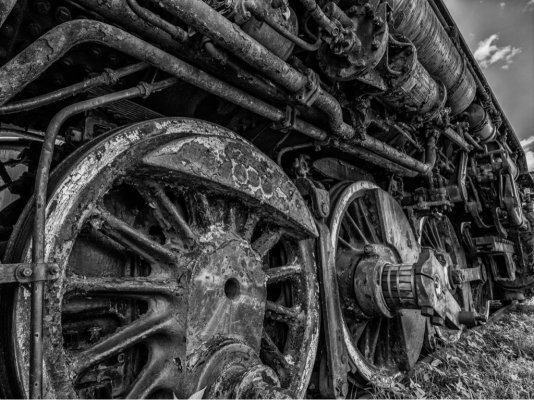
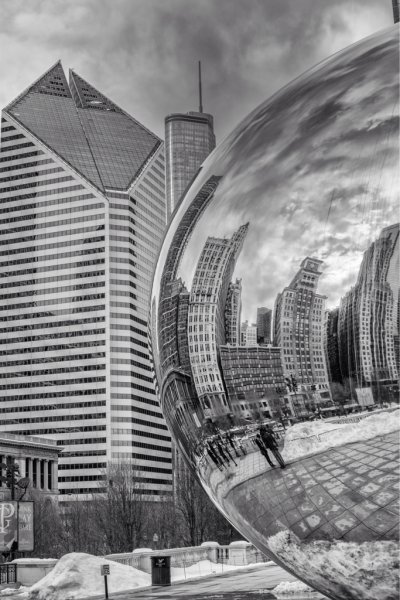
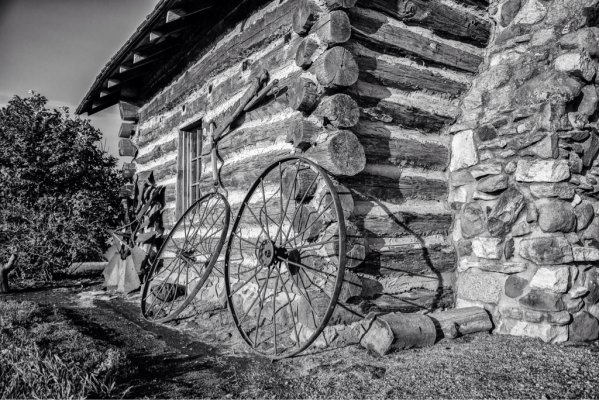
Sent from my iPad using Early Retirement Forum



Sent from my iPad using Early Retirement Forum
Last edited:
explanade
Give me a museum and I'll fill it. (Picasso) Give me a forum ...
- Joined
- May 10, 2008
- Messages
- 7,442
I need help picking a pocketible camera for travel. What I would like is high image quality, at least as good as what I get from my m4/3 system. I imagine I will need a bigger sensor than most small cameras come with. The lens needs to be fast f/2.8 at least and I will sacrifice zoom range to get a faster lens.
Any suggestions?
I've heard of several cameras offering sensors bigger than those in typical compact cameras, even APS-C, but not sure if they're actually pocketable.
Some are like the Sony RX-100.
This seems like a good overview:
Compact cameras for advanced shooters (roundup) - CNET
Not sure they're really pocketable though. May be pocketable if you wear a jacket, but maybe not in the front pocket of jeans.
If you're looking to complement your micro 4/3 with even smaller kit, maybe micro 4/3 isn't as small and light as one would think.
Chuckanut
Give me a museum and I'll fill it. (Picasso) Give me a forum ...
I use silver efex pro as a Lightroom plugin. I start out in Lightroom lowering highlights, then edit in silver efex pro, usually using control points to edit skies, and add structure. Then back to Lightroom for sharpening. I use it on all my b&w's. Here's a few examples of photos edited with silver efex pro. I haven't used any of the others in the NIK collection.
Very nice!
RonBoyd
Give me a museum and I'll fill it. (Picasso) Give me a forum ...
Very nice!
+1
Chuckanut
Give me a museum and I'll fill it. (Picasso) Give me a forum ...
I've heard of several cameras offering sensors bigger than those in typical compact cameras, even APS-C, but not sure if they're actually pocketable.
Some are like the Sony RX-100.
This seems like a good overview:
Compact cameras for advanced shooters (roundup) - CNET
Not sure they're really pocketable though. May be pocketable if you wear a jacket, but maybe not in the front pocket of jeans.
If you're looking to complement your micro 4/3 with even smaller kit, maybe micro 4/3 isn't as small and light as one would think.
Thanks for the suggestions on various cameras. I will study them.
Currently, my pocket camera is an older Canon S90. It has served me well for many years, but it suffers from a lot of noise above ISO 200. Since I like low light shooting, this can be a problem. Hopefully, the newer cameras have better noise control at ISO's in the 400 to 800 range. I don't expect them to be as good as my m4/3 body which can easily shoot good images at ISO 1600. But, it would be nice to be able to shoot at ISO 800 without excessive noise. I have set the bar high since there is no point in replacing the S90 unless I get a significant low light improvement.
RonBoyd
Give me a museum and I'll fill it. (Picasso) Give me a forum ...
Hopefully, the newer cameras have better noise control at ISO's in the 400 to 800 range. I don't expect them to be as good as my m4/3 body which can easily shoot good images at ISO 1600. But, it would be nice to be able to shoot at ISO 800 without excessive noise.
Most newer model cameras do indeed have more sensitive Sensors (primarily because of the greater Pixel count). For instance these Specs of the Canon G7X I pointed out earlier:
20.2 Megapixel*, 1.0-inch CMOS (sensor aspect ratio: 3:2)
*Image processing may cause a decrease in the number of pixels
Total Pixels
Approx. 20.9 Megapixels
Effective Pixels
Approx. 20.2 Megapixels
That it can record in RAW Format should also help with the low-light noise issue.Sensitivity
Auto*, ISO 125/160/200/250/320/400/500/640/800/1000/1250/1600/2000/2500/3200/ 4000/5000/6400/8000/10000/12800 (When in P mode)
*Optimal ISO speed is automatically set depending on the shooting mode.
On the other hand, a very noisy image is still much better than a shot not taken.
Addition: DpReview lists this for the G7X camera: Image ratio w:h 4:3, 3:2, 16:9
Last edited:
Ronstar
Moderator Emeritus
If anyone is interested in getting a 16x20 canvas- here's a groupon http://touch.groupon.com/deals/canv...S_CBP_CH1_NBR_x*fb6016903101983&fallback=true
Sent from my iPhone .using Early Retirement .//82339)
.using Early Retirement .//82339)
Sent from my iPhone
Any experience with these plugins?
Not with those, but I do use Onone's Perfect Effects and Portrait Professional. I like those, although Portrait Pro tends to overdo it a bit and I don't see it soon enough. So what I've come to do is put the Portrait Pro effects on a separate layer and then I can vary the opacity of the layer to control the totality of the effects.
RonBoyd
Give me a museum and I'll fill it. (Picasso) Give me a forum ...
Any experience with these plugins?
I am a OnOne Perfect Suite kinda guy. (Although I don't get out of Lightroom very often anymore.)
ItDontMeanAThing
Full time employment: Posting here.
When I first started shopping for an m43, a friend asked me how small they were. I said too big for front pocket, small enough that one won't think about leaving it home because it's too big and heavy.If you're looking to complement your micro 4/3 with even smaller kit, maybe micro 4/3 isn't as small and light as one would think.
P&S cameras and phones own the front pocket market. The smallest m43 body and kit lens tips the scales at 10.4 ounces (Panny GM1 with Oly 14-42 EZ), compared to 6.8 ounces for what was considered a premium point & shoot a few years ago (Canon S95). Both are 'always carry' cameras. The s95 fits in a front pants pocket because the lens collapses. The GM1 fits in some other pocket because the lens is collapsed in the photo. It's no contest as to which one is capable of delivering higher technical image quality.
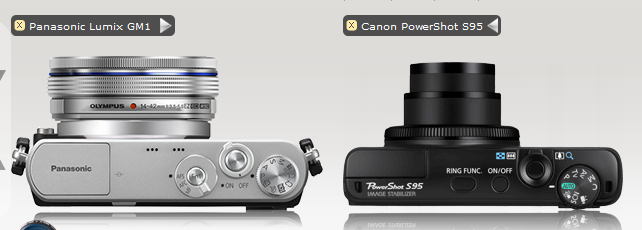
m43 also comes in bodies and lens to serve pros moving to a smaller kit from APS and FF systems. The GM1 is now paired with the 31 oz Oly omd em1 and 12-40 f2.8 lens.
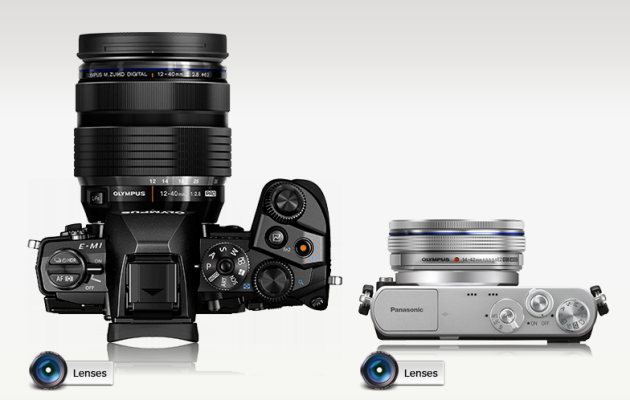
For you APS and FF shooters, go to Camera Size Comparison to compare the em1 & 12-40 to your equivalent.
Similar threads
Latest posts
-
-
-
What new series are you watching? *No Spoilers, Please*
- Latest: ShokWaveRider
-
-
-
-
